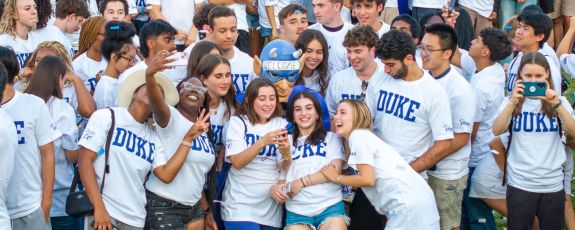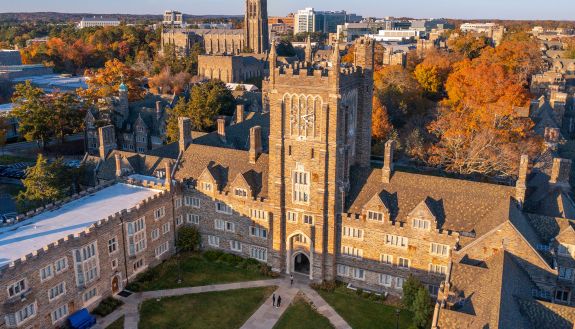
Duke’s Newest Undergraduates by the Numbers
First-year class reinforces Duke commitment to excellence and diversity
“Our focus on expanding access to a Duke education reflects the university’s unwavering commitment to diversity in all forms,” Gallimore said. “I applaud the dedication and commitment of everyone involved in this effort, which began long before the Supreme Court’s decision on race-conscious admissions and will continue into the future.”
Duke awards close to $150 million a year in grants and scholarship aid and meets 100 percent of demonstrated financial need for undergraduates. In 2023, the Duke Endowment awarded the university $100 million, which includes significant funding for graduate students from Historically Black Colleges and Universities as well as full tuition grants for undergraduates from North and South Carolina with total family incomes of less than $150,000.
White students make up about 52 percent of this new undergraduate class of Duke students. About 29 percent are of Asian, Asian-American and Pacific Islander descent; 14 percent are Hispanic/Latino, 13 percent are Black, and just more than 1 percent are Native American, American Indian, Native Alaskan or Native Hawaiian.
“This class represents a significant step in fulfilling a Duke promise that students from every background and from every circumstance could come here and find a place that welcomes them, supports them and educates them.”
Christoph Guttentag, dean of undergraduate admissions
Students self-report this data, and because some students report belonging to more than one racial group, the collective percentages top 100 percent.
“This very much feels like a class that’s appropriate for our 100th year,” said Christoph Guttentag, Duke’s dean of undergraduate admissions. “This class represents a significant step in fulfilling a Duke promise that students from every background and from every circumstance could come here and find a place that welcomes them, supports them and educates them.”
Duke enhanced its recruitment in the Carolinas to attract high-achieving students from close to home. Duke admissions staff visited more high schools to spread the word about the new tuition grant program for students from the Carolinas and reviewed and updated admissions processes to cast the broadest net possible. The Office of Undergraduate Scholars and Fellows hosted phone banks where faculty and students called admitted students to share the benefits of coming to Duke. And the DukeLIFE office, which supports low income and first-generation students, helped with recruitment as well, organizing phone and text-a-thons and webinars, and hosting family dinners for admitted first-generation or low-income students and their families.
“As Duke looks back on its history in our Centennial year, we find an important lesson: diversity was required to make the university a leading institution of higher education and knowledge production,” said Candis Watts Smith, vice provost for undergraduate education. “That lesson is now well incorporated in our values, our vision for Duke’s second century, and the way we approach critical responsibilities such as recruiting and enrolling the best students across the globe.”
“By working assiduously in accordance with these values, we bring about the outcome that we see today: welcoming a diverse group of extraordinarily meritorious students,” Smith said. “While it is common to hear people speak and act as if diversity and merit are mutually exclusive, at Duke we know they are intertwined.”
Steve Hartsoe contributed to this report.
RELATED STORIES

